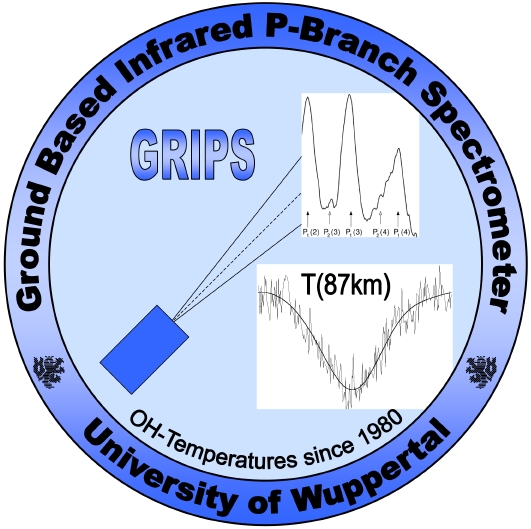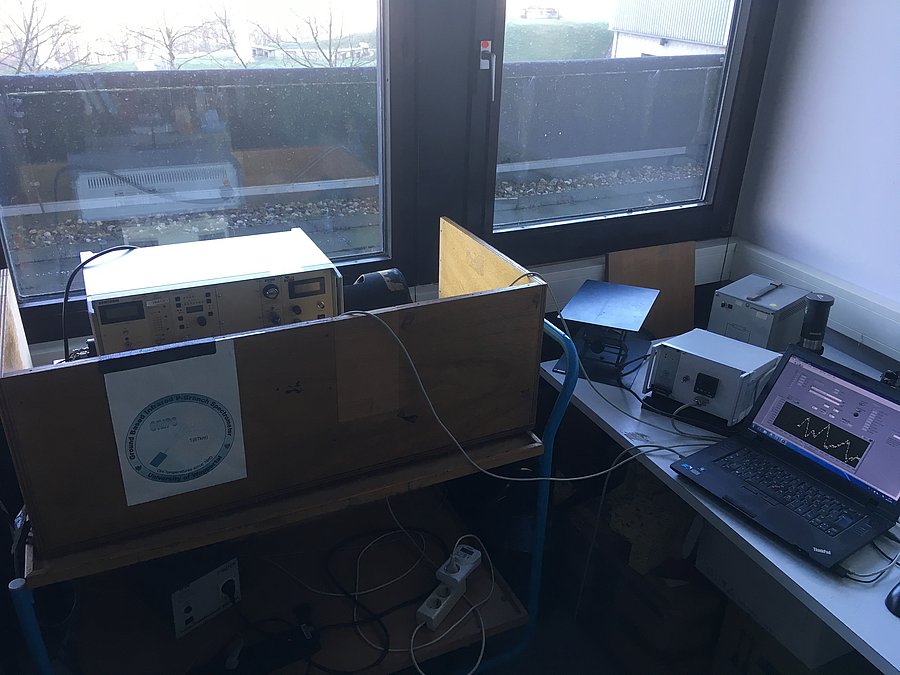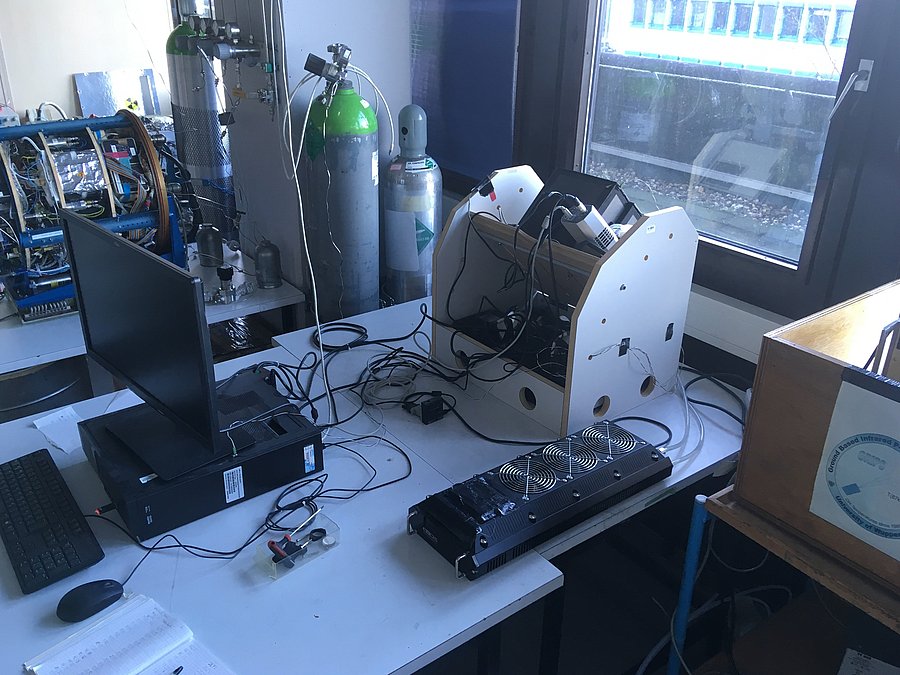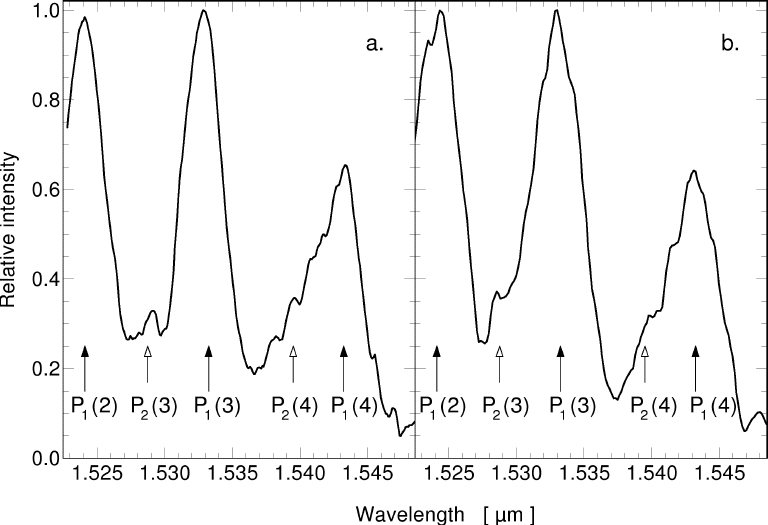GRIPS - long-term measurements at the mesopause near 87 km altitude
Overview
In the upper mesosphere, atomic hydrogen reacts with ozone to form excited hydroxyl molecules:
H + O3 -> OH* + O2*
The formed OH* layer is located at an altitude of about 87 km, the mesopause region. The NIR hydroxyl emissions have been measured in the nightglow since their identification by Meinel 1950. The rotational temperatures of the OH*(3,1) band are near the kinetic temperature of the atmosphere. They can be derived in a fairly simple manner from the relative spectral intensities for nighttime measurements.
The working group for Atmospheric physics at Wuppertal uses GRound-based Infrared P-Branch Spectrometer (GRIPS) to measure the temperature of the mesopause region at about 87 km altitude in "each" night. Clouds can influence the measurements such as no meaningful observations are possible any more and in some nights no data are available. GRIPS-II and GRIPS-N (see picture) are Czerny-Turner grating spectrometer that measure in the near infrared region between 1,52 – 1,55 µm with a spectral resolution of about 470. GRIPS-N is the follow up instrument of GRIPS-II, which stopped measurements in the middle of 2011. GRIPS-F is a new instrument version with an increased spectral resolution of about 610 and an increased time resolution (see picture). The measurements started in 1980 and have been continuously performed since mid-1987. The GRIPS-F instrument started working in 2015. In total more than 10000 nightly mean temperatures are available until end of 2022 (GRIPS-II/N and GRIPS-F).
The field-of-view of the GRIPS instruments has a horizontal resolution of 30x40 km² and 24x2 km² at an altitude of about 87 km and an observation angle of 45° for GRIPS-N and GRIPS-F, respectively. One OH* spectrum is measured every 210 seconds (GRIPS-N) and 15 seconds (GRIPS-F) (example spectra see picture). The spectra of both instruments are used at the moment to derive rotational temperatures of the OH*(3,1) band of the OH* layer. These rotational temperatures are derived from the relative intensities of the three lines (see arrows in the picture of the sepctra). Hence, the derived temperatures are not affected by changes of spectrometer sensitivity or atmospheric transmission unless such changes are wavelength dependent. Even in that case, influences would be small because the three lines are close together (1.524, 1.533, 1.543 µm).
The relative error of nightly mean temperature values is estimated to be about 1-2 K (GRIPS-II), 2-3 K (GRIPS-N), and 0.2 K (GRIPS-F). These estimates are derived from measurements during the whole night, and therefore, they still contain some atmospheric variability. Thus, the values must be considered as an upper limit for the relative errors. The absolute temperature error is about 2-3 K for all instruments. Spectral and absolute intensity calibrations are performed about once per year.
Details
Scientific results of the seasonal variation of the mesopause temperature and of trends are provided.
The GRIPS instrument is a part of the Network for the Detection of Mesopause Change (NDMC).
The GRIPS temperatures and further information can be obtained from Dipl.-Phys. Peter Knieling (knieling@uni-wuppertal.de) or Dr. Christoph Kalicinsky (kalicins@uni-wuppertal.de) on request.




